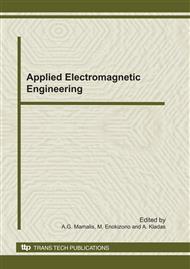p.391
p.399
p.407
p.415
p.425
p.435
p.447
p.455
p.466
No-Load Loss Modelling of Wound-Core Transformers Using Support Vector Machines and Genetic Algorithms
Abstract:
Accurate estimation of no-load losses is crucial in the transformer design procedure. It saves engineering man-hours, reduces delivery cycle and optimizes the use of core materials. The aim of this paper is to show that Support Vector Machines (SVM) can be successfully used to estimate no load losses.
Info:
Periodical:
Pages:
425-431
Citation:
Online since:
December 2010
Authors:
Price:
Сopyright:
© 2011 Trans Tech Publications Ltd. All Rights Reserved
Share:
Citation:


